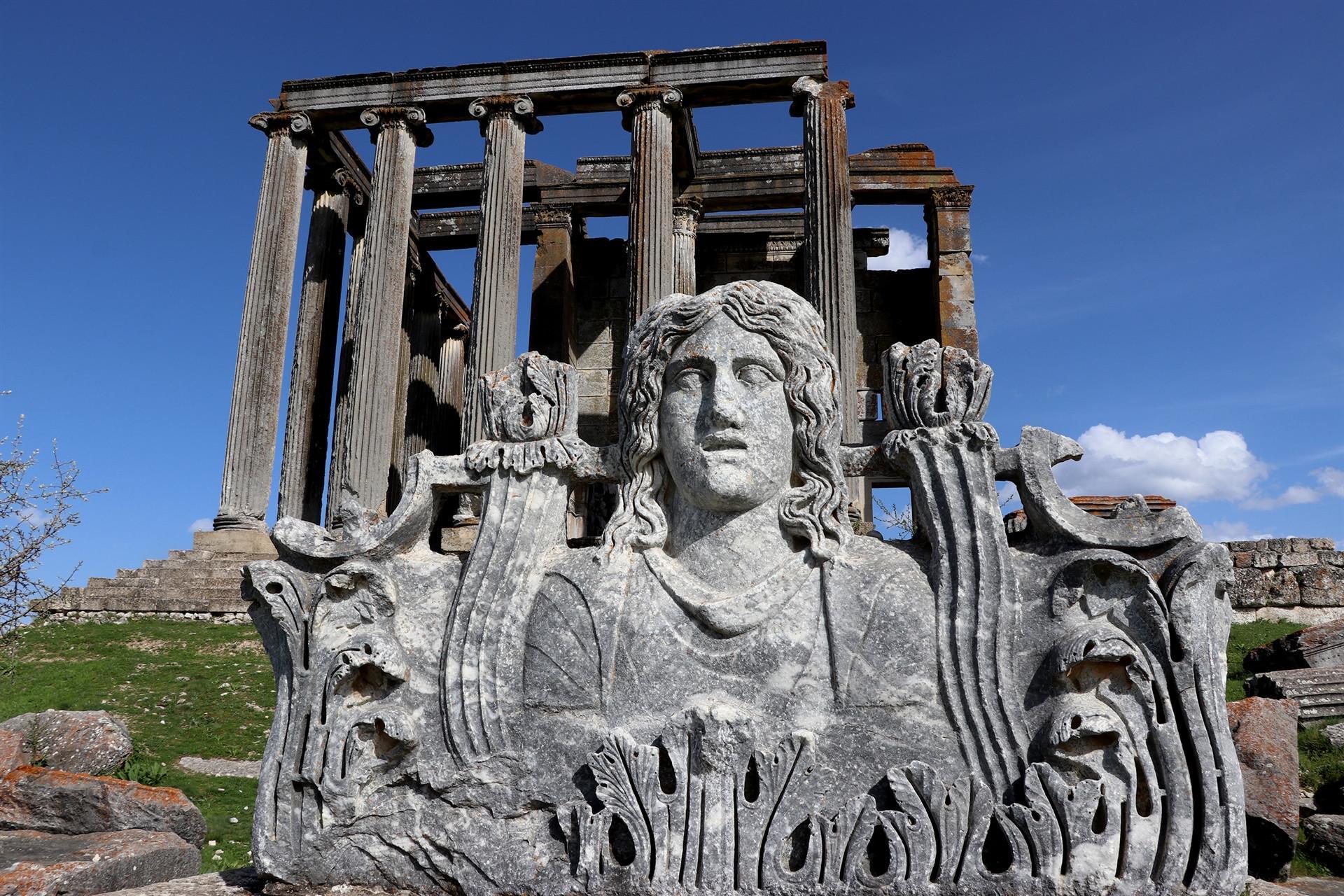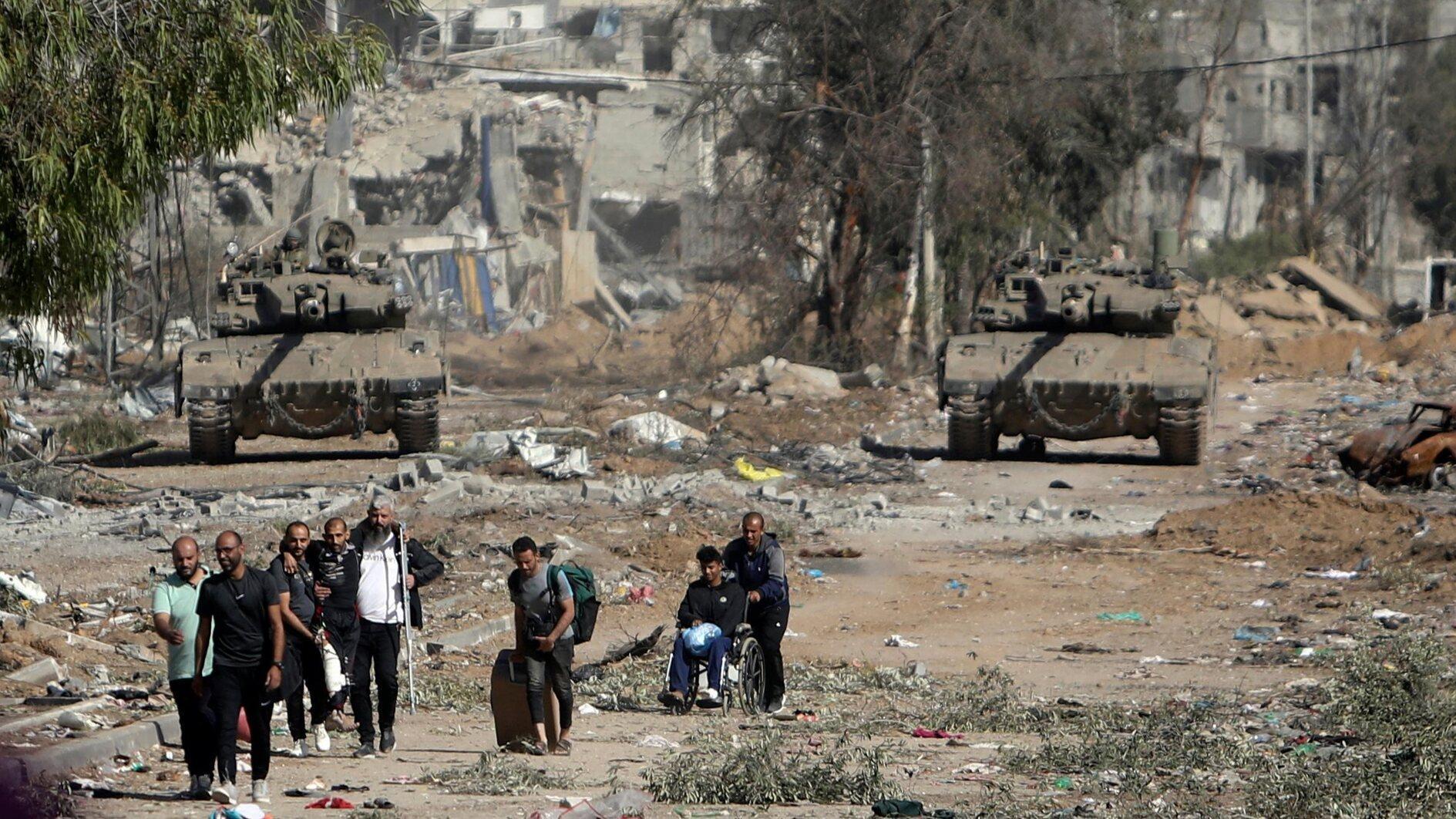More tourists expected in Aizanoi with new projects
KÜTAHYA

Excavation and restoration works will be accelerated this year in the ancient city of Aizanoi, which is home to the best-preserved Zeus Temple in Anatolia and called the “Second Ephesus.”
Located in the Çavdarhisar district in the western province of Kütahya, the ancient city, which was included in the UNESCO World Heritage Tentative List in 2012 and is 50 kilometers away from the city center, welcomes approximately 60,000 local and foreign tourists every year. Authorities are aiming to attract even more tourists to the region by accelerating excavation and restoration works.
Speaking to the state-run Anadolu Agency, Kütahya Governor Ali Çelik said, Aizanoi was a settlement with a history of nearly 5,000 years and hosted many civilizations.
Stating that their goal is to add the ancient city to the permanent list of UNESCO World Heritage Sites, Çelik said: “Excavations have been carried out by Turkish archaeologists for 11 years in Aizanoi. We are making an effort to present this place as a cultural heritage to our country and the world as soon as possible by speeding up the works.
Çelik said that as the weather conditions get better, the restoration of a stadium and a theater in the ancient city would continue, along with the project regarding the Penkalas Stream passing through the region.

Talking about the work planned to be carried out in Aizanoi, Çelik said: “Initially, excavations will be carried out in the agora [bazaar] in front of the Zeus Temple. Projects for the restoration of the old houses surrounding the cultural heritage will be completed. Restoration of the ancient dock walls on both sides of the Penkalas Stream will continue at great speed. In line with the spirit of that period, water will accumulate between the two bridges, contributing to the ambiance of the city. Works are slated to finish this year.”
Çelik emphasized that their primary goal is to restore the appearance of the ancient period by placing the stones that were moved over time in the stadium and the theater.
Stating that the Special Provincial Administration has made great contributions to the works, Çelik said, “At the same time, we plan to accelerate the restoration project work after the excavations in the stadium and the theater and put it out to tender at the end of the year. This is a precious treasure.”
The ancient city of Aizanoi comprises the Zeus Temple; an amphitheater with a capacity of 15,000 people; a stadium with a capacity of 13,500 people, which was built adjacent to the theater; two baths; a hamam with mosaics; a trade exchange structure; a columned street; five bridges, two of which are standing on Koca Çay; two agoras; gymnasium, an area where sports activities are held; Meter Steunene holy area; necropolis (cemetery); an ancient dam; and waterways.
It is estimated that 80,000-100,000 people lived in the ancient city during the Roman period.
Excavations carried out in the region by German archaeologists since 1970 were carried out by Pamukkale University Archeology Department between 2010 and 2020. The excavations were handed over to the Kütahya Museum Directorate this year.

















